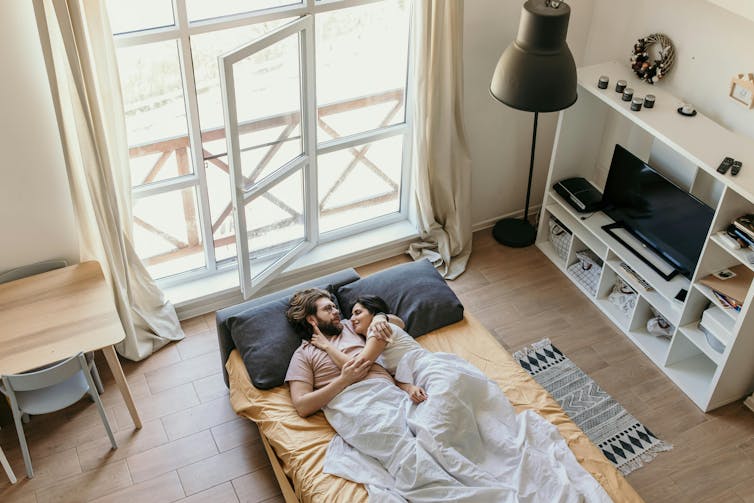Victoria was notified of 766 new cases of COVID-19 yesterday. All were locally acquired.
There are 6,666 active cases in Victoria – 6,665 locally acquired and one overseas-acquired case.
There are 257 COVID-19 cases in hospital in Victoria. 60 of those cases are in intensive care, with 41 cases on a ventilator.
Sadly, the Department was notified yesterday of four deaths:
- a man aged in his 80s from Moreland
- a man aged in his 70s from Hume
- a man aged in his 80s from Hume
- a woman aged in her 90s from Hume.
This brings the total number of deaths from the current outbreak to 20, and the total number of deaths in Victoria since the pandemic began to 840.
The total number of confirmed cases in Victoria since the beginning of the pandemic is 30,961.
Update: Cross-border travel for Victorian residents currently in NSW and the ACT
The Chief Health Officer has declared that, from 30 September, Victorians in an Extreme Risk Zone will be eligible to return home in Victoria if they are fully vaccinated with two doses, show evidence of a negative COVID-19 test 72 hours before their departure, and quarantine for 14 days upon arrival.
Additional testing requirements apply to the start and end of the 14-day quarantine period.
Existing Extreme Risk Zone rules will remain in effect for Victorians who are not yet fully vaccinated.
The Acting Chief Health Officer has declared that Albury in NSW will move from an Extreme Risk Zone to a Red Zone under Victoria’s travel permit system from 11:59pm, Thursday 23 September.
Victorians, not from the cross-border community, in Albury who were not eligible to return to Victoria as it was an Extreme Risk Zone are now able to apply for a Red Zone permit to re-enter Victoria.
All LGAs on the NSW-Victorian border will be classified as red zones. If you live in the cross-border community – and you haven’t left the cross-border area or you haven’t been in another Extreme Risk Zone at any time in the previous 14 days – you can cross the border and enter without a permit for any reason.
For more information on Victoria’s border restrictions, visit COVIDSafe Settings. For more information on Victoria’s travel permit system, visit Victorian Travel Permit System. These pages will be updated at 11:59pm to include the new travel zone designation.
Vaccines
Yesterday, 40,957 vaccine doses were administered by Victoria’s state-commissioned services. The total number of doses administered through state-run services is 3,285,323.
More than 75 per cent of Victorians aged 16 and over have now had at least one dose of a COVID-19 vaccine, and 45.6 per cent have had two doses.
Overall, more than 23 per cent of 12 to 15-year-olds in Victoria have received their first dose since becoming eligible on 13 September.
Across the state, four out of five Victorians aged 40 and over have also received at least one dose.
From Friday 24 September, all Victorian construction workers must be able to provide evidence that they have either had at least one dose of a COVID-19 vaccine or will have received their first dose by 2 October. Anyone unable to be vaccinated will not be permitted on construction sites unless they have proof of an exemption issued by an authorised medical practitioner.
This deadline is particularly important for construction in regional Victoria, which remains operating.
Outbreaks
Of the 766 cases recorded yesterday, the following Local Government Areas in metropolitan Melbourne recorded more than one newly diagnosed case:
- 19 cases in Banyule
- 4 cases in Bayside
- 2 cases in Boroondara
- 40 cases in Brimbank
- 20 cases in Cardinia
- 23 cases in Casey
- 23 cases in Darebin
- 10 cases in Greater Dandenong
- 13 cases in Hobsons Bay
- 264 cases in Hume
- 5 cases inKingston
- 3 cases in Knox
- 5 cases in Macedon Ranges
- 8 cases in Manningham
- 5 cases in Maribyrnong
- 6 cases in Maroondah
- 13 cases in Melbourne
- 32 cases in Melton
- 17 cases in Moonee Valley
- 74 cases in Moreland
- 3 cases in Mornington Peninsula
- 6 cases in Nillumbik
- 6 cases in Port Phillip
- 3 cases in Stonnington
- 4 cases in Whitehorse
- 76 cases in Whittlesea
- 52 cases in Wyndham
- 6 cases in Yarra.
There were also 21 cases notified in regional Victoria yesterday:
- 1 in Ballarat
- 1 Greater Bendigo
- 1 in Mildura
- 5 in Macedon Ranges
- 8 in Mitchell
- 4 in Moorabool
- 1 in Surf Coast.
Data on Victorian coronavirus cases is available at Victorian COVID-19 data.
Around 61 per cent of cases identified in Victoria yesterday are in Melbourne’s northern suburbs, with about 22 per cent in Melbourne’s western suburbs.
Around 84 per cent of all active cases in Victoria are people under 50 years of age, while almost a quarter of cases are people in their 20s.
Of the COVID-19 patients in hospital yesterday, 81 per cent were not vaccinated and 15 per cent were partially vaccinated. Three per cent were fully vaccinated, including a number of aged-care residents isolating in hospital for public health reasons.
There are currently more than 23,210 active primary close contacts in isolation in Victoria. More than 2,400 primary close contacts were cleared on Wednesday.
At midday today, there were more than 580 published exposure sites in Victoria.
For more information on each exposure site, including dates and times of exposure, please visit Case alerts – public exposure sites.
There may be occasions when the Department is unable to make contact with a business or residential premises before their listing as an exposure site. At all times, we take the decision of when to publish these sites in the interests of public health.
The Department regularly manages exposure sites that it doesn’t publish online, particularly if these sites represent lower-risk exposure, or if they have comprehensive record-keeping and contact-tracing measures, or if they identify small, private locations – including smaller apartment or townhouse complexes.
Wastewater testing
COVID-19 viral fragments have been detected in wastewater samples taken from several regional areas.
- Ballarat area – unexpected wastewater detections from the following suburbs:
- Lake Gardens, Alfredton, and Delacombe. Repeated detections between 17 and 22 September.
- Ballarat Central and Redan. The period of interest is 20-22 September.
- Ascot, Bald Hills, Ballarat North, Blowhard, Cabbage Tree, Cardigan, Invermay, Invermay Park, Lake Gardens, Learmonth, Miners Rest, Mitchell Park, Mount Rowan, Sulky, Wendouree and Windermere. Repeated detections from 15-17 September and 20-22 September.
- Bendigo area – repeated unexpected wastewater detections in an area that includes Ascot, Big Hill, California Gully, Eaglehawk, Eaglehawk North, East Bendigo, Epsom, Flora Hill, Golden Gully, Golden Square, Huntly, Ironbark, Jackass Flat, Junortoun, Kangaroo Flat, Kennington, Long Gully, Maiden Gully, North Bendigo, Quarry Hill, Sailors Gully, Spring Gully, Strathdale, Strathfieldsaye, Wellsford, West Bendigo and White Hills. The period of interest is 16-22 September.
- Hamilton – unexpected wastewater detection in an area that includes Hamilton. The period of interest is 18-20 September.
- Seymour – unexpected wastewater detection in area that includes Seymour. The period of interest is 19-21 September.
- Geelong – unexpected wastewater detection in area that includes Corio, Norlane and North Shore. The period of interest is 14-20 September.
- Benalla – unexpected wastewater detection in area that includes Benalla. The period of interest is 19-21 September.
- Warrnambool – unexpected wastewater detection in area that includes Allansford, Dennington and Koroit. The period of interest is 19-21 September.
The detections could be an undiscovered new case or cases, or they could be the result of one or more people in these areas who have recovered from COVID-19 but are still shedding the virus.
Anyone who lives in, works in or has visited the areas above is urged to watch for the mildest of COVID-19 symptoms and get tested as soon as possible if symptoms develop.
For more information on wastewater testing, visit Wastewater testing.
Testing
62,408 COVID-19 tests were processed yesterday – a new daily record.
The drive-through testing clinic on Golfers Drive in Chadstone has been temporarily closed while structural engineers inspect the site following Wednesday’s earthquake. Local residents should attend the drive-through testing clinic at Monash University’s Clayton campus.
Getting tested as soon as you have symptoms will help health authorities identify new positive cases and provide proper care for your family.
If you are concerned about losing money from missing work, support is available – including the $450 test isolation payment. For more information, go to Financial and other support for COVID-19.
To find your nearest COVID-19 testing site, visit Where to get tested for COVID-19. Operating hours and wait times will vary.
More information
To access the most up-to-date information on COVID-19 in Victoria, visit Coronavirus (COVID-19) Victoria







